
The Fritz Hansen Series 7 chair was designed back in 1955 by Danish architect and designer Arne Jacobsen. You might recognize his name because he also designed the Series 7 chair's loungy brother, the Egg chair.
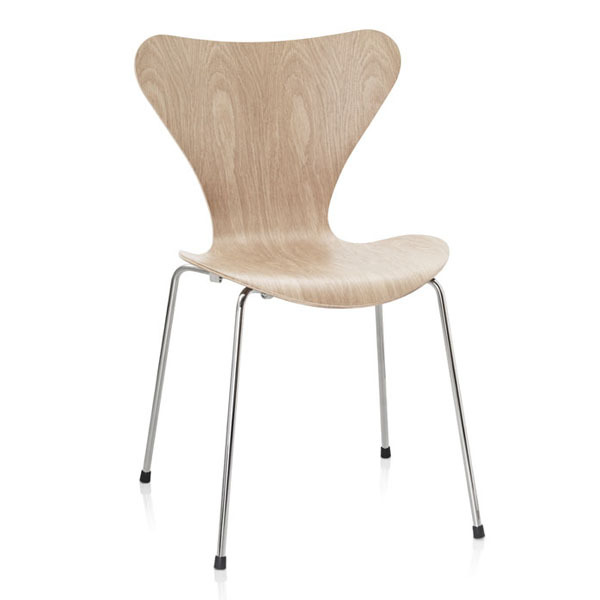
Back in the mid-century, the Series 7 was a controversial design due to its simplistic form and the fact that it was steam bent wood veneer, a manufacturing innovation of the times. The production technique of the Series 7 chair, which is manufactured in Denmark, is no different than it was back in 1955. Each chair is crafted from nine layers of veneer and two layers of Indian cotton, then sanded and hand finished to perfection. The Series 7 is now being introduced in Oak veneer, and Fritz Hansen has offered us a sneak peek into the making of this iconic chair:
I caught up with David Obel Rosenkvist, Vice President of Sales, North America for Fritz Hansen to get some inside info about the chair's construction and the decision to add a new wood option. Here's what he had to say:
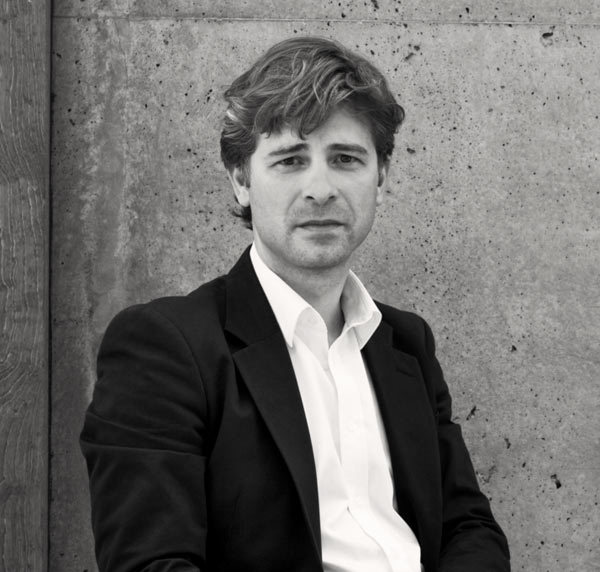
What makes the process of creating the Series 7 or any other Fritz Hansen product unique?
Only the highest quality veneer, glue and lacquer are used. Automated processes and manual craftsmanship are combined to ensure a high and uniform quality.
In the video, it shows a very thorough wood selection process - how do you go about choosing the wood for each chair? What things do the workers look for?
Only the best logs of wood are chosen by our supplier for the production of the veneer. Fritz Hansen inspects the veneer before it is shipped to Fritz Hansen's factory in Denmark. In the production, the veneer will be sorted again before its cut into length of a chair and pressed in the mold. Fritz Hansen's factory workers will, at all time, look for defects such as cracks, holes, discoloration, and mechanical damages from the veneer production.
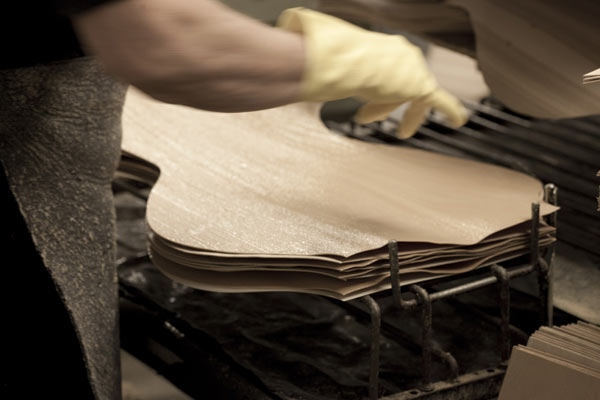
There are some things done by hand and others performed by machines. Why are certain functions still performed by hand?
The wood has natural variations and the finishing work of the surface, requires a gentle and thorough handling that cannot easily be obtained by a machine.
Are there processes or tasks that are still performed at Fritz Hansen that have been passed down from generations?
Cutting, sorting and combining the surface veneer has always been a task that requires trained personnel with a high level of knowledge about the veneer.
What technological advances have been made to the creation of a Series 7 chair since its inception in 1955?
The production has been automated to obtain a more uniform quality. The shells are now cut in shape on a CNC molding machine, and the painting is done by a robot.
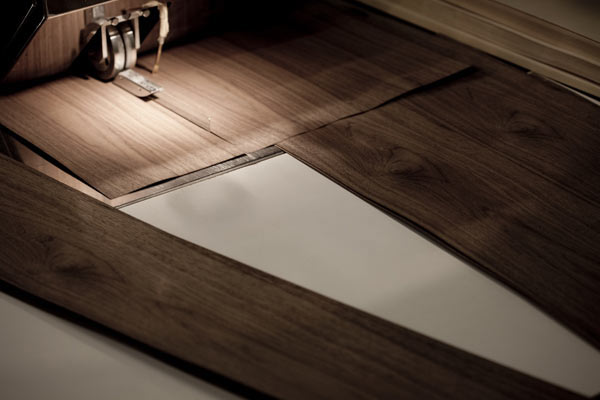
The Fritz Hansen website talks about a lamination technique refined by Søren C. Hansen - is this technique still used today? Can you explain it?
The lamination is still done by this lamination technique. Layers of veneer with glue in between are pressed in a mold while the glue is hardening. After hardening of the glue, the pressure is released and the shell now has the shape of a Series 7 chair.
What was behind the decision to add more veneer options to this classic chair? Often times updating or making additions to a classic is met with some hesitation - was there any hesitation internally at Fritz Hansen in adding new options?
The Series 7 chair was originally introduced in wood veneer; however it was a natural progression to introduce the Series 7 in new finishes as the market progressed. Any additions with our classic and new collection are always met by the approval of the designer or family members. In the US market, the most popular are the black and white finishes.
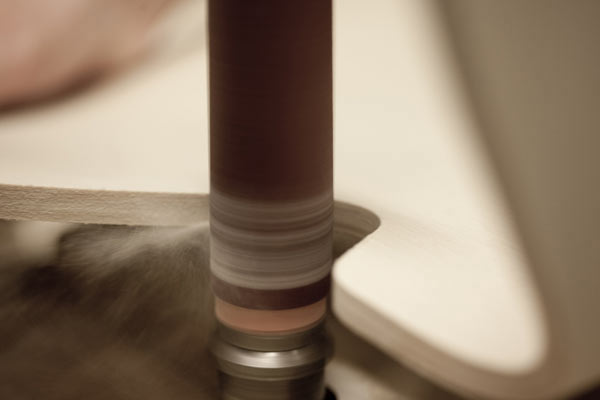
The man at the end of the video looks very proud of his work. What are your thoughts about the relationship between the workers and the product? What about the consumers and the product?...
The average worker at FH has been employed for 18 years, that means they are very skilled and committed to the product and the Republic of Fritz Hansen brand.
Our products appeal to consumers who have a high appreciation for premium design and good quality products. Fritz Hansen's designs are recognized around the world as global design icons and are a natural choice in furnishing buildings created by leading architects and home owners wishing to express their individuality and make unique statements.
Thank you, David.
Fritz Hansen's corporate showroom is located in SoHo but you can also find an authorized dealer at fritzhansen.com
All photos and video courtesy of Fritz Hansen.